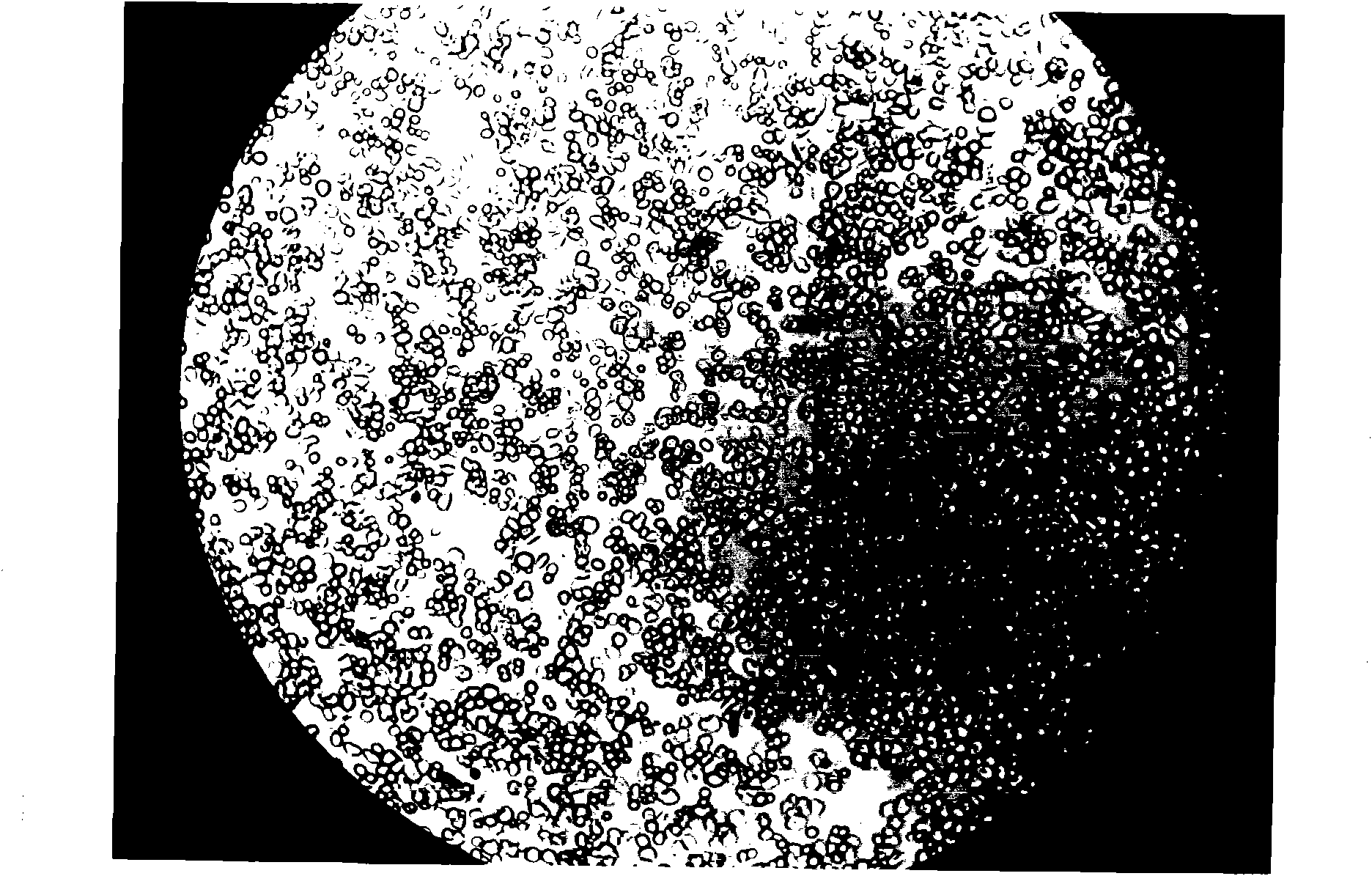Method for isolating and culturing human primary hepatocytes
A technique for the isolation and cultivation of primary hepatocytes, which is applied in the biological field of in vitro culture of hepatocytes, can solve the problems of long time required, easy pollution, and many operating procedures, and achieve the effects of saving cost, saving use, and low cost
- Summary
- Abstract
- Description
- Claims
- Application Information
AI Technical Summary
Problems solved by technology
Method used
Image
Examples
Embodiment 1
[0023] Embodiment 1: The specific steps of the method for the isolation and culture of primary human hepatocytes from human liver tissue obtained by surgical resection are as follows:
[0024] 1. After informed consent, take the normal liver tissue (approximately 3cm × 2cm × 1cm, about 8 grams) removed from the patient undergoing hepatectomy, and quickly put it into the liver tissue preservation solution DMEM (high sugar) + 1% bismuth Anti-(penicillin, streptomycin, that is, the working concentration of penicillin is 100U / ml, and the working concentration of streptomycin is 100ug / ml) in a sterile centrifuge tube, put it in an ice box (temperature 0 ~ 4 ℃) and bring it back to the experiment room;
[0025] 2. Take out the centrifuge tube containing the liver tissue block, wipe the surface with alcohol cloth for disinfection, and put it into the ultra-clean bench; take out the tissue block with sterile forceps, put it in a petri dish, and clean the liver with D-Hank's solution a...
experiment example 1
[0037] Experimental Example 1: Trypan blue staining to detect freshly isolated primary human hepatocytes. Trypan blue is mainly used to identify the survival of primary cultured cells after separation. Stain directly with 0.4% trypan blue under a microscope Visual observation is enough, live cells are not stained.
[0038] First prepare 1.4% trypan blue mother solution, weigh 4g trypan blue, add a small amount of distilled water to grind, add double distilled water to 100ml, filter with filter paper, store at 4°C, and dilute to 0.4% with PBS when used; the staining steps are:
[0039] 1. Prepare a single-cell suspension from the freshly separated human primary hepatocytes obtained in the above step 6, suspend the cells with DMEM high-glucose solution, and dilute appropriately (10 5 cells / ml);
[0040] 2. Staining: Take 1 drop of cell suspension with a pipette and drop it on the glass slide, add 1 drop of 0.4% trypan blue solution, and mix for 3 minutes;
[0041] 3. Observe. ...
experiment example 2
[0043] Experimental Example 2: Calculation of cell viability in trypan blue exclusion experiment, take a drop of cell suspension and drop it on a glass slide, trypan blue exclusion, observe under a microscope, count 200 cells, cell viability = (number of live cells / 200)×100%, the result of counting in this experiment is that the number of live cells is 180, that is, the cell viability is 90%.
PUM
 Login to View More
Login to View More Abstract
Description
Claims
Application Information
 Login to View More
Login to View More - R&D
- Intellectual Property
- Life Sciences
- Materials
- Tech Scout
- Unparalleled Data Quality
- Higher Quality Content
- 60% Fewer Hallucinations
Browse by: Latest US Patents, China's latest patents, Technical Efficacy Thesaurus, Application Domain, Technology Topic, Popular Technical Reports.
© 2025 PatSnap. All rights reserved.Legal|Privacy policy|Modern Slavery Act Transparency Statement|Sitemap|About US| Contact US: help@patsnap.com



